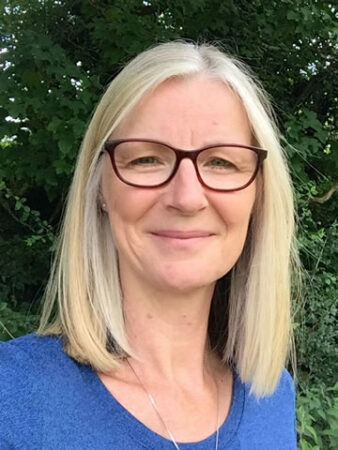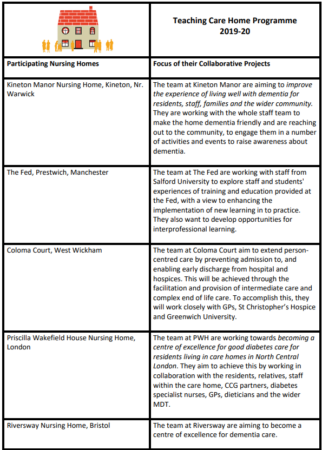Home News & Views The power of communities of practice
The power of communities of practice
Kate Sanders, Practice Development Facilitator, FoNS

I was very fortunate last week to spend a day with the current Teaching Care Homes Programme participants. Unfortunately it was not possible for all of the teams to be there, and some team members had other issues that they needed to attend to, and they were missed; however, the room felt full, with 16 participants who were keen to engage. There was a fabulous mix of people who work in care homes, but also collaborators from the acute sector, a hospice, a CCG and universities.
We had a day planned, but what we found was that these plans got largely put to one side as the teams created their own day of sharing and questioning. The energy in the room was infectious, as was the generosity and humour.
 The day started with an opportunity for the teams to share the progress that they are making with the collaborative projects that they are leading and facilitating (warts and all!!). The original plan was that these presentations should be 10-15 minutes long, but as the teams began to talk about what they were doing, the questions and conversations began to flow. The participants began to challenge themselves, thinking about what they were hearing and how this related to their projects, or wider practice within the homes. There was a constant buzz in the room as opportunities were being explored. For example, the team from Kineton Manor Nursing Home shared a short video that they had created about Namaste Care, which they are developing as part of their work. Others talked about the wider stakeholders that they are talking to, for example local authorities, MPs, university departments beyond nursing, and the benefits that they hoped they would gain from these connections.
The day started with an opportunity for the teams to share the progress that they are making with the collaborative projects that they are leading and facilitating (warts and all!!). The original plan was that these presentations should be 10-15 minutes long, but as the teams began to talk about what they were doing, the questions and conversations began to flow. The participants began to challenge themselves, thinking about what they were hearing and how this related to their projects, or wider practice within the homes. There was a constant buzz in the room as opportunities were being explored. For example, the team from Kineton Manor Nursing Home shared a short video that they had created about Namaste Care, which they are developing as part of their work. Others talked about the wider stakeholders that they are talking to, for example local authorities, MPs, university departments beyond nursing, and the benefits that they hoped they would gain from these connections.
Before we knew it, the morning was over. It had been completely filled with the participants’ voices, celebrating achievements, supporting those who were not making as much progress as they would like, sharing ideas, exploring new opportunities and identifying actions. During the afternoon, we were able to create a space for the teams to be more reflective, to have conversations in smaller groups about the ‘so what?’ This enabled them to think about the new insights and learning that had emerged and the specific actions that they wanted to take.
What we experienced was a Community of Practice (CoP) in full flow. Wenger-Traynor and Wenger-Traynor (2015) describe a CoP as ‘groups of people who share a concern or a passion for something they do and learn how to do it better as they interact regularly’. They are all:
- proud to be working in care homes (the domain) and are committed to continuously developing the experience for residents and their families, and also for staff
- building relationships with each other (the community), being generous with what they share, helping each other through activities and discussions, creating energy and enthusiasm to move forward
- developing knowledge together (the practice), knowledge that is contextually based and therefore relevant to their practice
I recognise that the investment in an event like this is significant, not only in terms of staff time, but also for travel and venue costs. However, I imagine if you had been in the room with us, you would have thought that it was an investment worth making. Staff working in care homes can feel very isolated and undervalued; enabling them to come together to share and learn can help to address these issues. At a time when there are significant concerns across all sectors about staff recruitment and retention, this activity represents an investment in people. I would argue that connecting with like-minded others has a positive impact on our wellbeing, I know the day impacted on mine.
We look forward to sharing more with you over the coming weeks and months about the projects and their progress. In the meantime, I wonder how it is possible to translate some of the energy and enthusiasm created by these teams into other workplaces, by recognising the benefits of coming together around a common cause, to connect, share, celebrate, reflect and learn. What could that look like where you work?
Reference
Wenger-Traynor, E. and Wenger-Traynor, B. (2015) Communities of Practice: A Brief Introduction. April 2015. Retrieved from: https://wenger-trayner.com/wp-content/uploads/2015/04/07-Brief-introduction-to-communities-of-practice.pdf (Last accessed: 24th June 2019).
Comments are closed.

